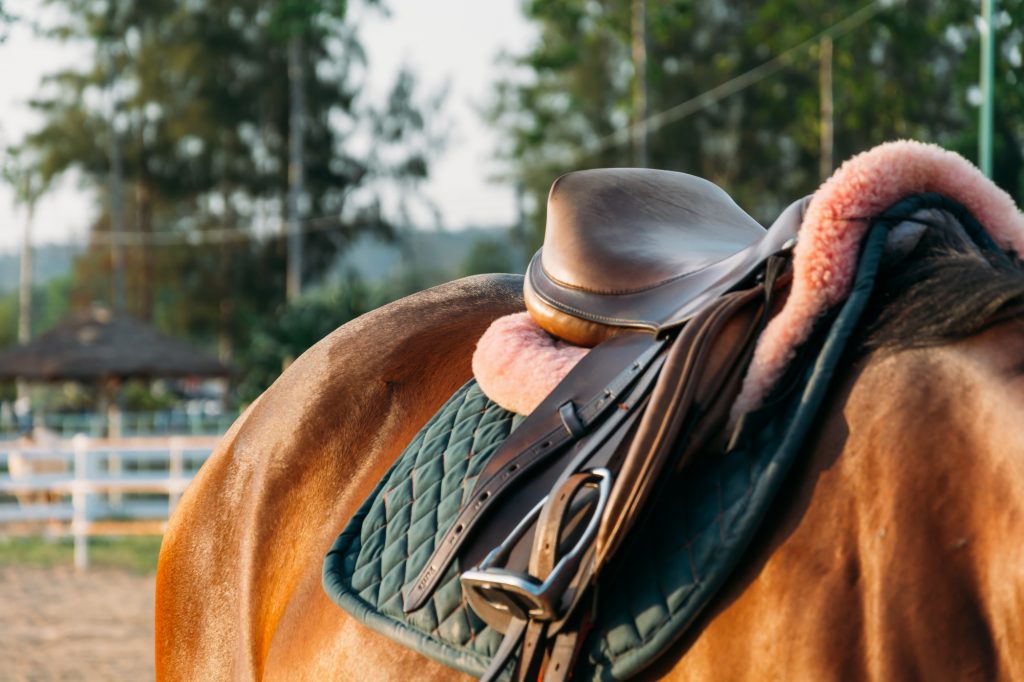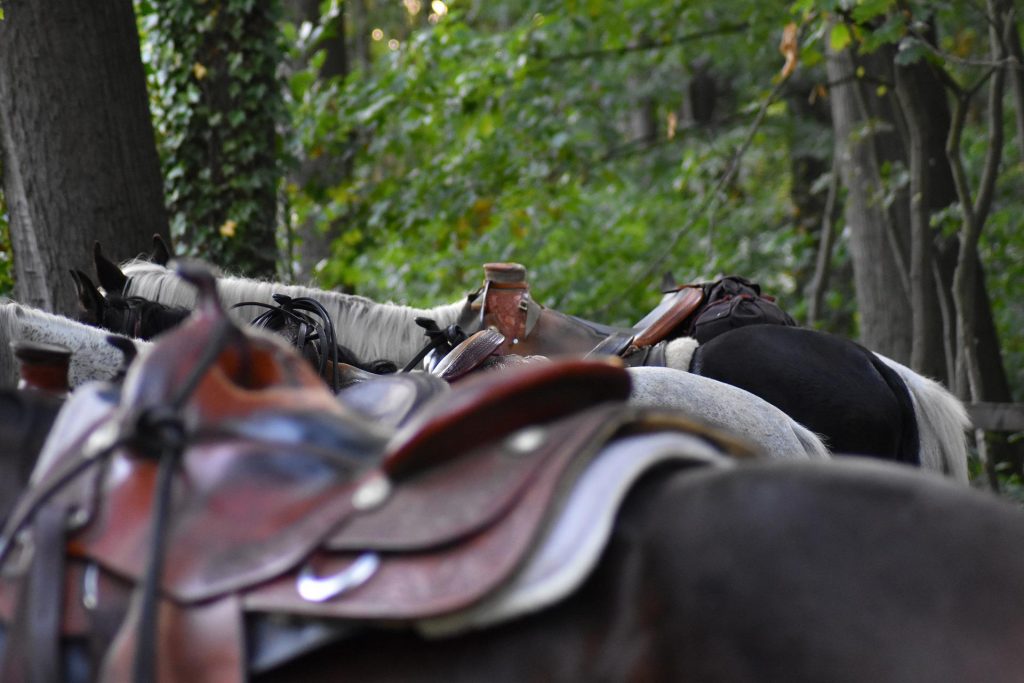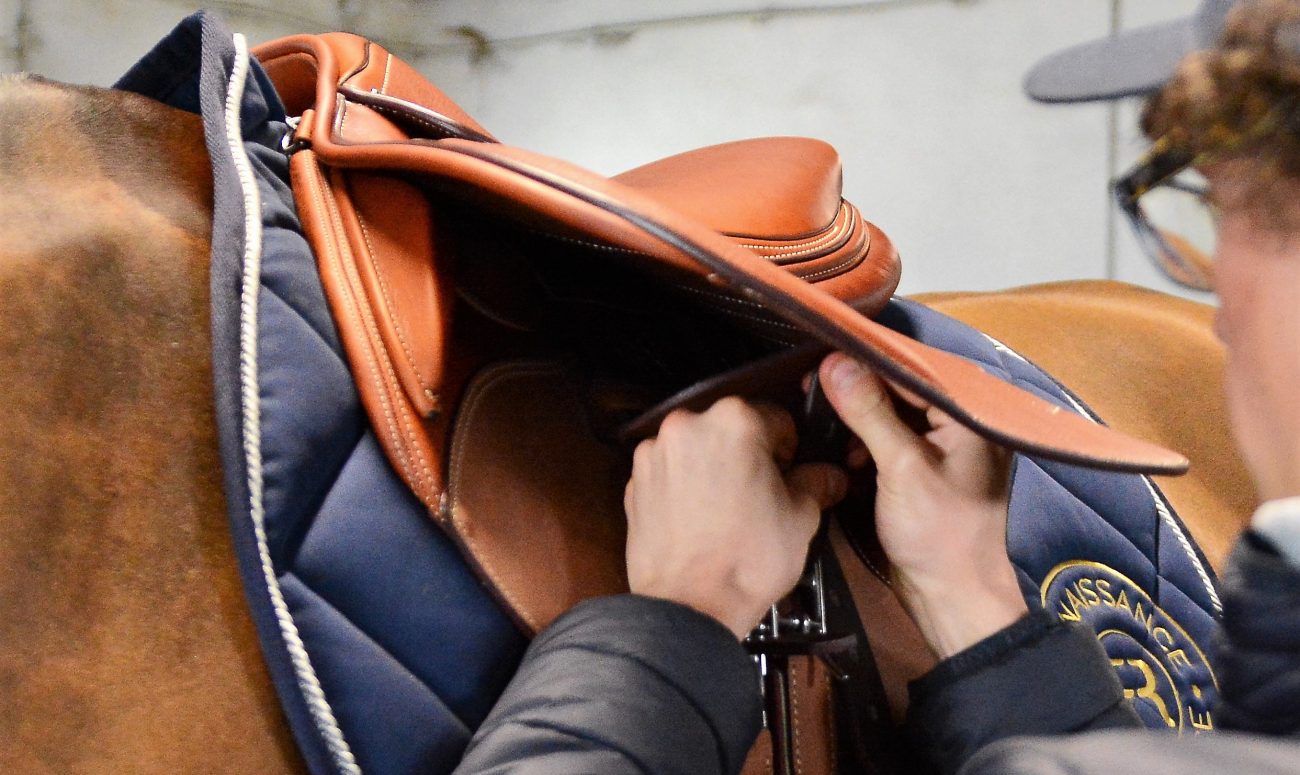If you want to buy a new saddle, there are several factors you need to consider before making the purchase. The panels of the saddle sit on the horse’s shoulders and spine. A poorly fitted saddle can pinch these muscles and lead to back sores and even some serious injuries. It is also possible for the saddle to be too small or too large.
Measurement
To fit a saddle properly, you need to measure your horse’s withers. Measurement when fitting a saddle includes both the seat and the gullet. Seat and gullet are equally important. A saddle’s seat size should match the size of the rider’s thigh. Here are some tips to measure a saddle.
A wire measuring tool is a great tool to use when fitting a saddle. This tool is made of a 16-inch piece of stiff wire that molds to the horse’s shape and holds it. Use an eight-inch point and resize the measuring tool if necessary. Measurements can be repeated up to three times, depending on the shape of the horse.
Make sure the width of the saddle fits properly. A saddle that is too wide or too narrow can cause lameness and other serious problems. It can even cause behavioral problems in your horse when too much pressure is transferred from the front to the middle of the animal.
Angle of the bars
The angle of the bars is one of the most important factors when fitting a saddle. Bar angle plus bar flare are two of the primary determining factors. Without these, a saddle fitter can only estimate how the saddle will fit a horse. Other factors to consider include weight, exercise level, weather, feed, and overall health of the animal.
When fitting a saddle, the angle of the bars is one of the first things to look at. Bars can be flat, arched, or straight. The angle of the bars varies between brands. In general, a saddle with a quarter horse’s angle will fit a quarter horse better.
The tree bar should be placed behind the horse’s shoulder blade. The angle of the bar should be at the same angle as the horse’s spine. If it is too narrow, the saddle will be too tight, and the horse will feel pain. A wire is the best way to measure the angle of the saddle tree bars. The end of the wire should be 4 1/2″ down from the horse’s spine and just behind the shoulder blade.

Channel or gullet width
The width of a channel or gullet is an important measure when fitting a saddle. It should fit two to two and a half fingers, with the gullet plate parallel to the bridge and the saddle points at a similar angle to the trapezius area. This width is important because pressure points may irritate the trapezius area and restrict blood circulation.
The gullet width should be at least 2 inches wider than the top of the withers, otherwise the gullet will be too narrow and the saddle will not distribute the rider’s weight evenly. When fitting a saddle, keep in mind that a narrow gullet can cause damage to the horse’s spine.
Another important aspect to consider when it comes to saddle fitting is the supraspinous ligament. The supraspinous ligament runs along the horse’s spine and is responsible for the shape and stretch of the animal’s head and neck. A saddle that fits poorly will cause the saddle to be getting pulled forward on the horse’s shoulders, causing discomfort for the rider and for the horse. Ensure that the gullet or channel width is appropriate for the type of riding the horse does.
Checking for back pain
Saddles are a crucial part of the horse’s comfort. The saddle’s panel should lie flat on the horse’s back and allow sufficient space for the rider’s spine. To test whether the panel is flat, place a flat hand underneath the saddle, and lift the sweat flap a little. You should not feel direct pressure on the withers, nor should the saddle create any ruffling in the horse’s hair.
While it may seem obvious, not all back pain in horses is caused by incorrect saddle fit. In some cases, back pain is due to sore feet or injuries that occurred under the saddle. The back pain may also be a symptom of internal or metabolic problems, a lack of conditioning, vitamin or mineral balance, or a problem with the liver and kidneys. If you suspect that your horse is suffering from back pain, consult a certified equine chiropractor for a thorough diagnosis.
Another symptom of saddle soreness is bald spots or patches of broken hair. These are often indicative of saddle soreness, so it’s important to make sure the saddle fits properly and prevent such pain. If your horse’s back is painful, you can try putting a pressure-distributing pad underneath the saddle. This is particularly important for horses with sensitive backs.

Girth straps
When fitting a saddle, you should always check the girth straps. They work together to stabilize the saddle, while still allowing your horse to move freely. If the saddle has three girth straps, fasten two of them. This allows for equal pressure on the horse’s back. Be careful not to purchase a saddle with straps that are too short or too long, as they may be difficult to fasten and will not offer proper pressure.
Saddle pads and numnahs
What exactly is a numnah? It’s a sheepskin or wool pad that is placed under a saddle to help it retain a clean appearance and cushion the horse’s back. The word numnah is not well known in North America, but horse enthusiasts in the UK and India are more familiar with this accessory.
Saddle pads come in a variety of shapes, and different saddles require different types. Regardless of shape, all are designed to reduce moisture and keep the horse’s back and withers free from rubbing. In addition, they are designed to help prevent heat buildup and shock – two of the main reasons why saddle pads are so important for horses.
Read more about how to fit a saddle for your horse
